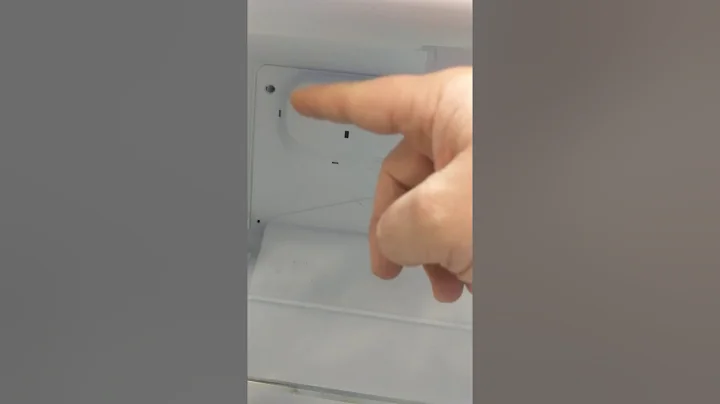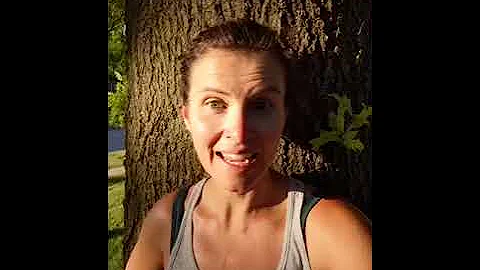Relieve Hip Osteoarthritis Pain with Effective Exercises and Stretches
Table of Contents
- Introduction
- What is Hip Osteoarthritis?
- Symptoms of Hip Osteoarthritis
- Cardinal Signs of Hip Osteoarthritis
- Causes of Hip Osteoarthritis
- Diagnostic Criteria for Hip Osteoarthritis
- Exercise and Rehabilitation for Hip Osteoarthritis
- Level One Exercises
- Level Two Exercises
- Accessory Exercises
- Risk Factors for Hip Osteoarthritis
- Stretching and Hip Osteoarthritis
- Weather and Hip Pain
- Conclusion
- References
Hip Osteoarthritis: Managing Pain and Stiffness
Hip osteoarthritis (OA) is a common condition that causes pain and stiffness in the hip joint, particularly in the elderly population. With over 240 million people affected worldwide, it is essential to understand the symptoms, causes, and management strategies for hip OA. In this article, we will discuss hip OA in detail, including its symptoms, diagnostic criteria, exercise and rehabilitation techniques, and risk factors. By the end, you will have a comprehensive understanding of hip OA and how to effectively manage its pain and stiffness. So, let's dive in and explore the world of hip osteoarthritis together!
What is Hip Osteoarthritis?
Hip osteoarthritis is a degenerative joint disease that primarily affects the hip joint. It occurs when the cartilage that covers the ends of the bones in the hip joint wears down over time, leading to pain, stiffness, and functional limitations. The hip joint's ball and socket structure, comprising the acetabulum of the pelvis and the femoral head of the thigh bone, is disrupted in individuals with hip OA, resulting in discomfort and reduced mobility.
👉 Symptoms of Hip Osteoarthritis
The most common symptom of hip osteoarthritis is stiffness and pain in the groin or buttock region. Individuals with hip OA often experience increased discomfort in the morning and after prolonged periods of sitting, which typically improves with movement within 30 minutes. However, rest can also alleviate the symptoms temporarily. It is crucial to recognize the cardinal signs of hip OA, which include:
- Loss of range of motion, especially in rotational or abduction movements.
- Difficulty putting on shoes or socks.
- Trouble getting in and out of cars.
- Inability to sit cross-legged on the floor or other surfaces.
👉 Causes of Hip Osteoarthritis
In the past, hip osteoarthritis was considered a wear and tear problem caused by excessive use of the hip joint. However, recent research has unveiled the intricate biological processes involved in this condition. Hip OA is a result of complex interactions between tissue metabolism, anatomical and physiological changes, inflammation, and loss of joint function. All structures of the hip, including the bone, cartilage, synovium, capsule, ligaments, tendons, bursa, and muscles, are affected.
👉 Exercise and Rehabilitation for Hip Osteoarthritis
Exercise and rehabilitation play a crucial role in managing hip osteoarthritis. Regardless of the severity of symptoms or the need for surgery, weight loss, education, and exercise should be the first line of intervention. Let's explore two levels of exercises that can help alleviate hip OA pain and stiffness:
Level One Exercises:
- Standing Hip Brace: Place your inside arm against a wall and lift the inside leg up, focusing on stability.
- Standing Hip Adduction: Place both hands on a wall and lift one leg up, feeling tension on the outside of the leg.
- Glute Bridge: Lie on your back with feet bent, lift your hips towards the ceiling using your buttocks or hips.
Level Two Exercises:
- Box Squat: Using a box or a bench, squat down and up while keeping your weight over your midfoot.
- Forward-Facing Step Up: Stand up with your hip and step down, ensuring proper pelvic alignment.
- Lateral Step Up: Step up sideways, emphasizing hip engagement and stability.
Accessory Exercises:
- Standing Hip Abduction: Lift your leg away from the midline, pressing into a ball placed between your leg and a wall.
- Standing Hip Deduction: Press your leg towards the midline, using a ball placed between your leg and a wall.
- Standing Flexion: Place the front of your shin against a ball and wall, raise your leg, maintaining pressure into the wall.
👉 Risk Factors for Hip Osteoarthritis
Several risk factors increase the likelihood of developing hip osteoarthritis, including age, female gender, obesity, genetics, major joint trauma, hip impingement, and engaging in heavy load occupations such as farming. While stiffness is commonly associated with hip OA, intense stretching should be avoided as it can worsen the condition. Moderate stretching exercises may be helpful, but high-intensity or forced stretching can lead to further joint damage.
👉 Weather and Hip Pain
It is often speculated that changes in weather, particularly cold temperatures and rainy conditions, can exacerbate hip pain. However, studies have shown little to no effect of weather changes on hip pain. Nevertheless, personal beliefs and perception can influence pain experiences. If you strongly believe that cold weather affects your hip pain, it may subjectively worsen the symptoms.
In conclusion, hip osteoarthritis is a prevalent condition that causes pain, stiffness, and functional limitations in the hip joint. Understanding its symptoms, causes, and management techniques is crucial for effective pain relief and improved quality of life. By adopting a holistic approach that includes exercise, rehabilitation, weight management, and proper education, individuals with hip OA can lead a more active and fulfilling life.
This article is for informational purposes only and does not constitute medical advice. Please consult a healthcare professional for diagnosis and treatment options for your specific condition.
References
References to be listed separately as resources.
Highlights:
- Hip osteoarthritis is a common condition affecting over 240 million people worldwide.
- Symptoms include stiffness and pain in the groin or buttock region, worse in the morning and after prolonged sitting.
- Cardinal signs of hip OA include loss of range of motion, difficulty with daily tasks, and sitting cross-legged.
- Exercise and rehabilitation, along with weight loss, education, are key interventions for hip OA management.
- Stretching should be done moderately, avoiding intense stretching that can worsen the condition.
- Weather changes have little to no effect on hip pain, but personal beliefs can influence subjective experiences.
FAQ
Q: Can hip osteoarthritis only affect elderly individuals?
A: While hip OA is commonly seen in the elderly population, it can also occur in younger individuals, especially those with risk factors like hip impingement or joint trauma.
Q: Is surgery the only option for severe hip osteoarthritis?
A: Surgery is typically considered when conservative treatments fail to provide sufficient relief. However, it is important to explore non-surgical interventions, including exercise and weight management, before considering surgery.
Q: Can hip OA be completely cured?
A: Hip osteoarthritis is a chronic condition that cannot be completely cured. However, with proper management and lifestyle changes, the symptoms can be effectively controlled, allowing individuals to lead an active life.
Q: Are there any alternative therapies that can help with hip OA pain?
A: Some individuals find relief from hip OA pain through alternative therapies such as acupuncture, chiropractic care, or herbal supplements. However, it is essential to consult with a healthcare professional before trying any alternative therapy.
Q: Are there any specific foods or dietary supplements that can help with hip OA?
A: While a healthy diet is important for overall joint health, there is no specific food or dietary supplement that has been proven to cure or prevent hip osteoarthritis. However, maintaining a balanced diet rich in fruits, vegetables, whole grains, and lean proteins can support overall joint health.
Note: The answers provided are for informational purposes only and should not replace medical advice. Consult with a healthcare professional for personalized recommendations.







